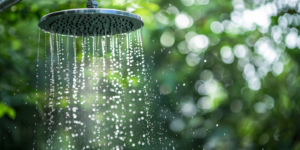Damage caused by water can be a huge pain to deal with. Not only is it an inconvenience, but it can also lead to mold growth and other serious problems. If you’ve recently had damage caused by water in your home, you may wonder how to clean it up and prevent further damage. Following these tips will help you get your house back to normal after water damage.
1- Turn Off the Power
If you can, turn off the power to your home. This will aid in the prevention of further damage. Suppose you cannot turn off the power or are unsure how, please call an electrician for assistance. Once the power is off, unplug any electronics used during the water damage. This includes televisions, computers, and small appliances.
2- Remove Excess Water
If you have experienced damage caused by water in your home, it is crucial to take quick and decisive action to clean up the mess and prevent further damage. One of the essential steps in this process is removing excess water as quickly as possible. Here are some helpful tips for doing just that:
1. Use a wet/dry vacuum to remove any standing water. This is a critical first step to avoid mold and mildew growth.
2. If the affected area is large, you may need a sump pump to remove the water.
3. Once all the standing water has been removed, use a towel or mop to soak up any remaining moisture from carpets, flooring, and other surfaces.
4. Place fans in the affected area to help speed up the drying process.
5. Open windows and doors to allow cross ventilation and further facilitate drying.
3- Remove Wet Materials
If your house has suffered water damage, it is essential to remove all wet materials. This includes carpets, rugs, furniture, and any other items that have been soaked. These items can quickly become a breeding ground for mold and mildew, so getting them out of the house as early as possible is essential. If possible, try to salvage any items that can be saved by cleaning and drying them thoroughly.
4- Dry Out the House
If your house has been flooded, it’s important to dry it out to prevent mold and mildew from growing. Start by opening all the windows and doors to allow air to circulate. If you have a dehumidifier, set it up in the affected room or rooms to help remove moisture from the air. If you don’t have a dehumidifier, you can rent one from a hardware store or home improvement center.
Next, use fans to help circulate air throughout the house and speed up the drying process. Please place them in strategic locations, such as in front of open windows and doors and near any wet materials that need to be dried out, such as carpets, rugs, and furniture. Turn on the ceiling fans if you have them.
Finally, mop any wet floors with a clean towel or mop head. Be sure to wring out the towel or mop your head often, so you’re not just spreading the water around. Once the floor is dry, vacuum it with a wet/dry vacuum to pick up any remaining water or debris.
5- Clean and Disinfect
If your house has been damaged by water, it is important to clean and disinfect all affected areas as early as possible. Here are some tips to help you get started:
- Start by removing any wet or damaged items from the affected area
- If possible, use a wet vacuum to remove any remaining water
- Once the area is dry, thoroughly clean all surfaces with a disinfectant
- Pay special attention to any porous surfaces, such as carpets or upholstery, which may need to be replaced
- Call a restoration company who has the proper knowledge on how to clean the damage specific to your house.
By taking these steps, you can help prevent the spread of mould or other harmful bacteria by making sure that your house is safe and healthy for your family.



